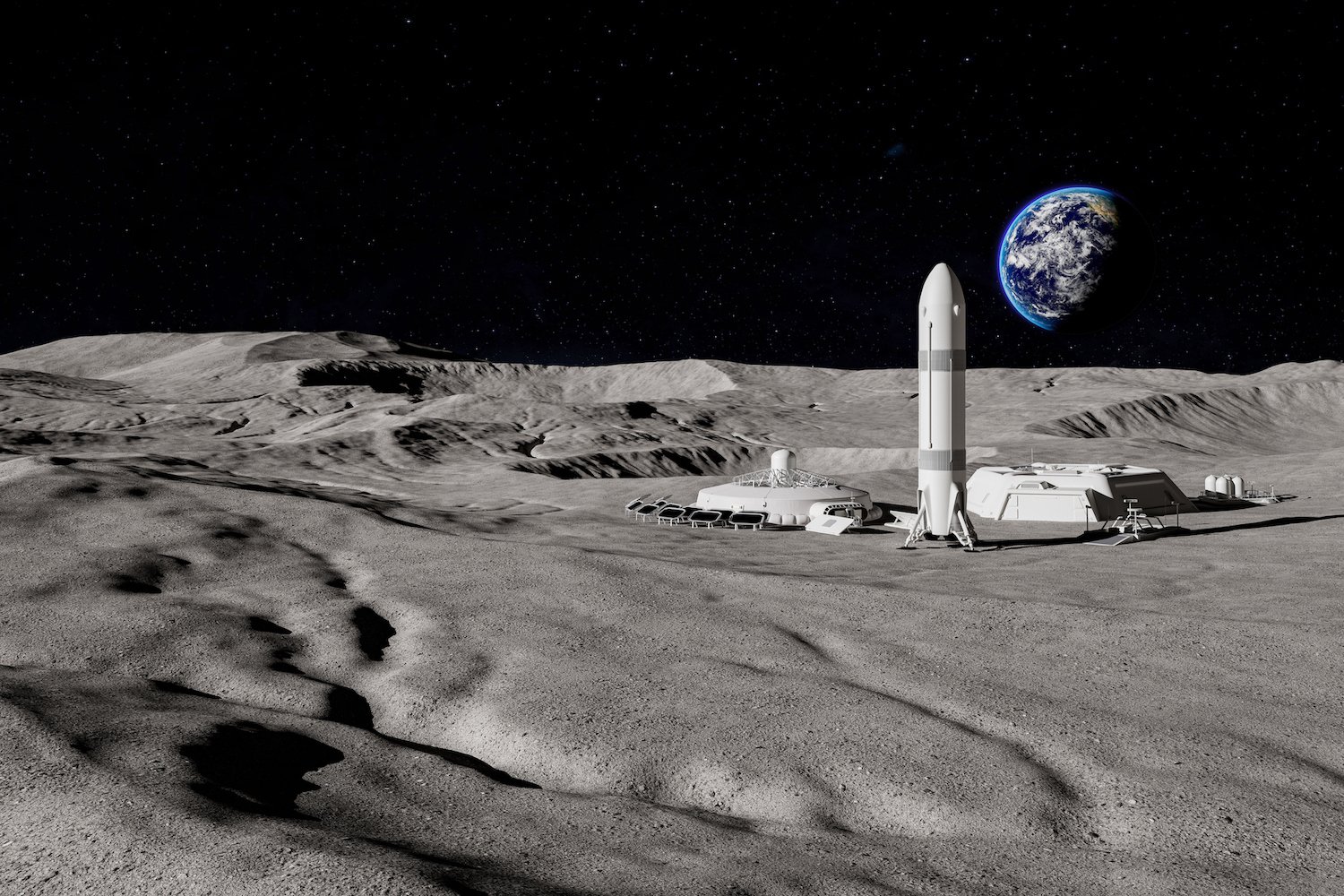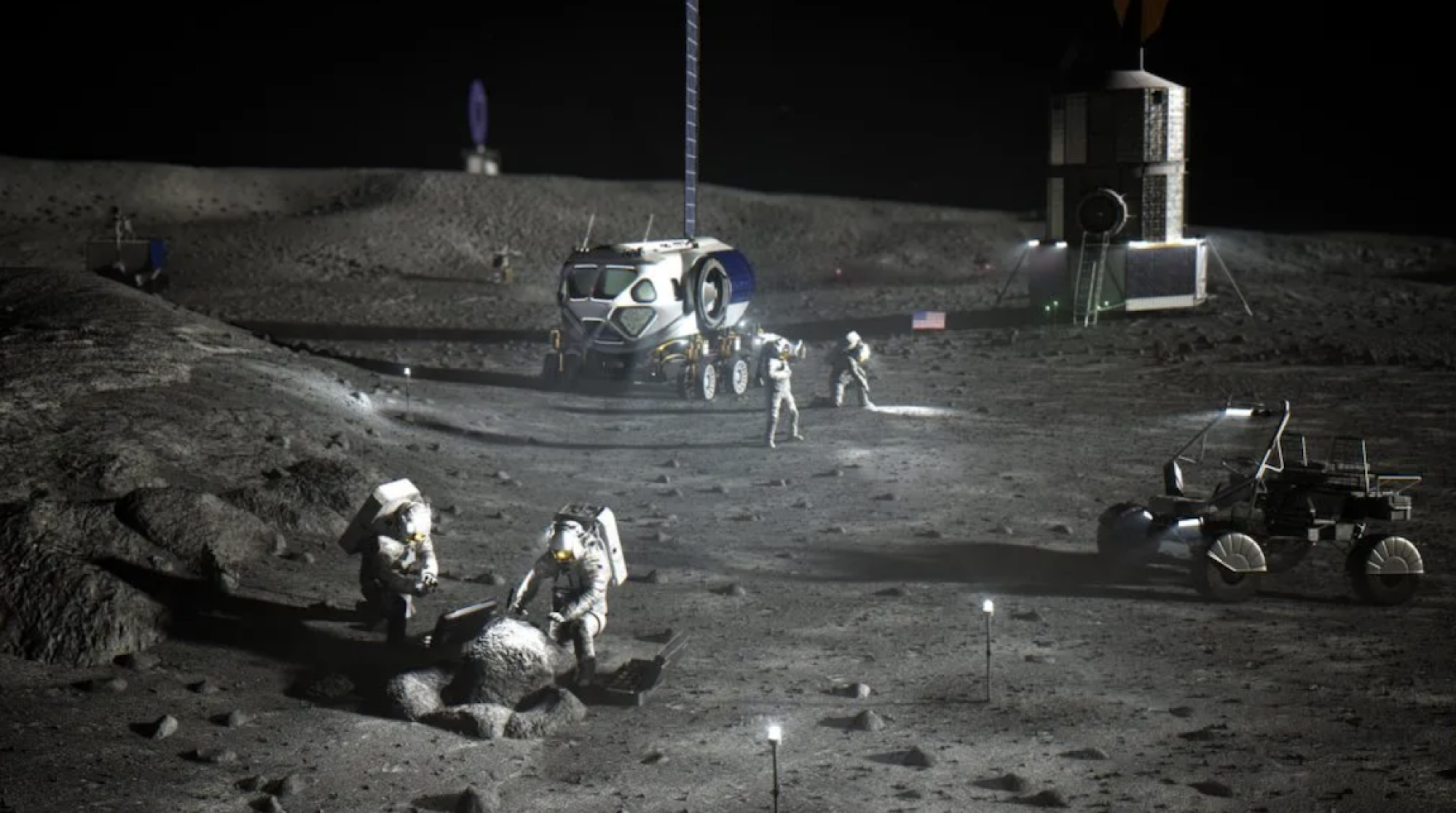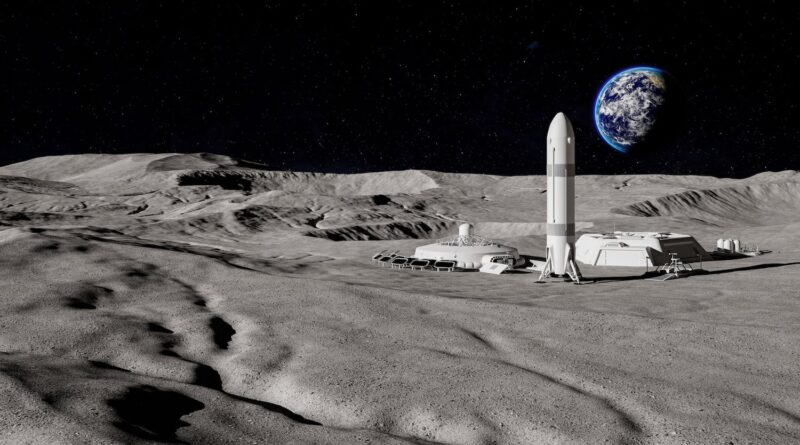The U.S. is exploring a railroad for the moon. It has a good reason.

The first U.S. transcontinental railroad, completed with a spike hammered into the track in 1869, transformed the nation. Perhaps the same will happen on the moon.
The Defense Advanced Research Projects Agency, or DARPA — an ambitious federal innovations division — has begun collaborating with over a dozen companies on potential future lunar technologies, including a moon railroad. It’s called the 10-Year Lunar Architecture Capability Study, or LunA-10, and its mission is to find technologies that will catalyze a self-perpetuating lunar economy. It’s a salient time; already the new space race is on.
It’s an endeavor that seeks to avoid a go-at-it-alone approach, wherein diverse nations and industries struggle to communicate, travel, and do business on the moon. The NASA Apollo missions from over 50 years ago were an extraordinary exploration and engineering marvel, but those billions in spending never established growth or a lasting presence on the moon.
“One of the critiques about Apollo is we put in all this effort, and then it ended,” Michael Nayak, a program manager in DARPA’s Strategic Technology Office, told Mashable.
Now as NASA, global space agencies, and companies return to the moon with robotic spacecraft, the future Nayak sees is one that must be able to progress. It might be mining helium-3 (an extremely rare resource on Earth that could be used in medical imaging, computing, and even energy), harvesting water ice to create rocket fuel for deep space missions, and beyond.
“How do we make it valuable to life on Earth?” Nayak, a former space shuttle engineer and NASA planetary scientist overseeing LunA-10, emphasized.
The project is called LunA-10 because it’s focused on what lunar technology would realistically look like in the 10 years after NASA’s Artemis III mission, wherein astronauts will land in the moon’s coveted south pole, a region where planetary scientists suspect there’s water ice and other resources lodged in dark, shadowy craters. As of March 2024, NASA expects astronauts to step foot on the moon in late 2026.
“How do we make it valuable to life on Earth?”
DARPA is exploring six areas needed for future moon growth: generating power; communications and navigation; construction and robotics (in a near future where robots can build roads and infrastructure); mining resources; transportation; and market research — to determine what industries are viable on the moon.
The rocketry and spacecraft that blasted astronauts to the moon over a half-century ago no longer exist. Everything going to the moon, and establishing a lunar presence, will be new. “It’s just a blank sheet of paper,” Nayak said. Other conceptual ideas include towering lighthouses that can illuminate dark, resource-rich craters and provide communications across the barren lunar surface.
DARPA recently chose the aerospace and defense giant Northrup Grumman to create the concept for the railroad. “The envisioned lunar railroad network could transport humans, supplies, and resources for commercial ventures across the lunar surface — contributing to a space economy for the United States and international partners,” the company wrote. They’ll aim to develop a railway that limits the human footprint on the largely still pristine lunar surface, and design a system that anyone could ride or load cargo on (such as with standardized, moon-worthy equipment that can withstand huge temperature swings).

Transportation is a critical part of any future moon ambitions. When a large rocket, perhaps SpaceX’s Starship, ferries several tons of cargo to the moon, those supplies — building materials, food, or mining equipment — can’t sit around. Life on the moon will be expensive. “Every minute it spends sitting there is revenue lost,” Nayak emphasized.
“The railroad was America’s first technology corridor.”
Ultimately, the LunA-10 project will scrutinize different moon concepts developed in 2024, like a lunar railroad or power plant. Some technologies will make the cut — meaning DARPA will help accelerate these concepts — and some won’t. The hope is to graduate from the current age of moon exploration to a foundational age wherein countries and industries try out and set the stage for potential lunar endeavors (like a mining project). Those successful endeavors will then, if all go as planned, reach an industrial age, where real goods and services are made or provided on our natural satellite, some 238,855 miles away. The moon, for instance, could be a fuel depot for deeper space missions to scientifically fascinating Mars or resource-rich asteroids.
Over 150 years ago, the transcontinental railroad flipped an economic switch. “Just as it opened the markets of the West Coast and Asia to the East, it brought products of Eastern industry to the growing populace beyond the Mississippi,” the Public Broadcasting Service explained. “The railroad ensured a production boom, as industry mined the vast resources of the middle and Western continent for use in production. The railroad was America’s first technology corridor.”
A lunar world designed to facilitate transportation, communication, and progress might allow today’s nascent ideas to one day bloom beyond Earth. Who knows what the coming lunar decades will bring in the 2040s and beyond?
“There’s an idea in someone’s head right now that will be the next big thing,” Nayak said.

